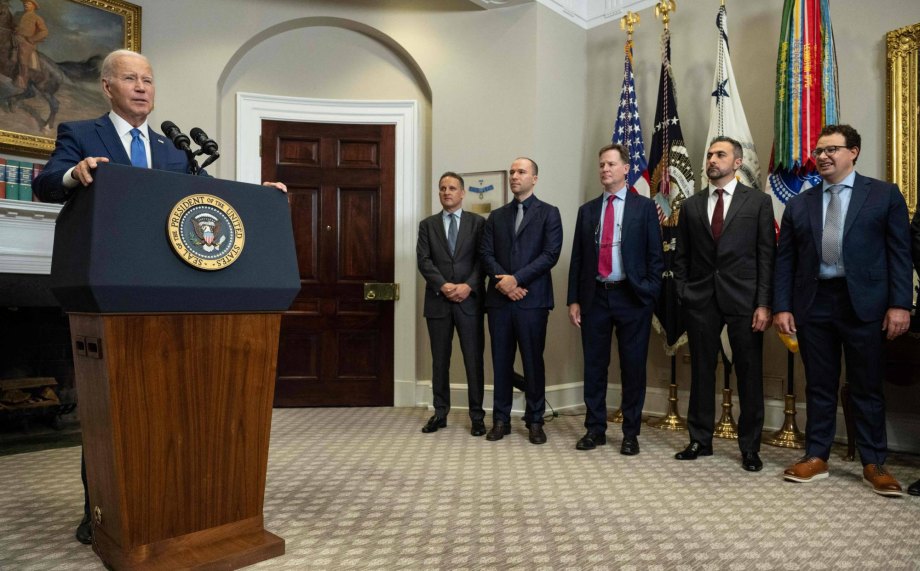Biden issues executive order to create new AI safety standards and safeguards

President Joe Biden has issued an executive order on artificial intelligence (AI), marking the U.S. government’s initial action of its kind. This directive mandates new safety assessments, equity and civil rights guidance, and research concerning AI’s impact on the job market.
This executive order marks the U.S. government’s inaugural move of its kind, mandating fresh safety assessments, equity and civil rights guidance, and research concerning AI’s effects on the labor market.
The order also extends the groundwork established by the voluntary commitments previously obtained from top AI companies by the White House. This order signifies the foremost significant and compulsory government action in the realm of this technology.
As we reported back in July, the White House said that some major AI players, including OpenAI, Alphabet (Google’s parent company), and Meta have voluntarily pledged to take measures to enhance safety with the implementation of watermarking on AI-generated content.
While law enforcement agencies have indicated their readiness to enforce existing laws on AI misuse, and Congress has shown interest in learning more about the technology for potential new legislation, the executive order is expected to have an immediate impact. An official from the administration emphasized that, like all executive orders, it carries the weight of law.
The White House delineates the essential components of the executive order in eight parts:
- Creating new safety and security standards for AI, compelling certain AI companies to share safety test results with the federal government, directing the Commerce Department to devise guidance for AI watermarking, and establishing a cybersecurity program to identify flaws in critical software using AI tools.
- Safeguarding consumer privacy by creating guidelines for agencies to assess privacy techniques used in AI.
- Advancing equity and civil rights by providing guidance to landlords and federal contractors to avoid discrimination perpetuated by AI algorithms and outlining best practices for AI’s appropriate role in the justice system, particularly in sentencing, risk assessments, and crime forecasting.
- Protecting consumers by tasking the Department of Health and Human Services to assess potentially harmful AI-related healthcare practices and offering resources for educators to responsibly use AI tools.
- Supporting workers by producing a report on AI’s potential impact on the labor market and investigating ways the federal government could assist affected workers.
- Fostering innovation and competition by expanding AI research grants, especially in areas like climate change, and modernizing criteria for highly skilled immigrant workers in the U.S.
- Collaborating with international partners to establish global AI standards.
- Developing guidelines for federal agencies‘ AI use and procurement and expediting the hiring of AI-skilled personnel within the government.
According to White House Deputy Chief of Staff Bruce Reed, this order represents “the strongest set of actions any government in the world has ever taken on AI safety, security, and trust.” It builds upon voluntary commitments previously obtained from leading AI companies and marks the initial binding government action on the technology. It precedes an AI safety summit hosted by the U.K.
The senior administration official highlighted the executive order’s significance, citing the involvement of 15 major American tech companies that have agreed to voluntary AI safety commitments, emphasizing the need for concrete regulation in AI development.
The executive order requires large companies to share AI safety test results with the U.S. government before the official release of AI systems. It also emphasizes the National Institute of Standards and Technology’s role in setting AI “red-teaming” standards, stressing system defenses and identifying potential problems. Additionally, it directs the Department of Commerce to establish standards for watermarking AI-generated content.
Furthermore, the order addresses training data for significant AI systems and outlines the necessity to evaluate agencies’ collection and utilization of commercially available data, especially data involving personal identifiers.
The Biden administration is also making efforts to bolster the AI workforce, providing avenues for individuals with AI expertise to find relevant opportunities within the federal government via AI.gov.
A senior administration official highlighted that certain safety and security aspects of the order have a 90-day target for implementation, while others might take closer to a year. The order is part of the President’s directive to utilize government authority across a wide range of areas to manage AI’s risks and leverage its benefits.

